Steam mopping is a great way to clean your floors without having to use harsh chemicals. But why do your floors still feel sticky after you steam them? Let's take a look below.
If your floors are still sticky after you steam them, it could be due to the following reasons:
- Residue buildup
- Wrong cleaning agent
- Dirty mop head
- Not enough steam
- Not vacuuming first
It can be frustrating to put all that effort into steaming your floors only to find that they're still sticky. In this article, we will take a closer look at each of these reasons to help you troubleshoot the problem so that you can get your floors clean and free of streaks. In addition, we will answer other frequently asked questions about cleaning floors, so read on!
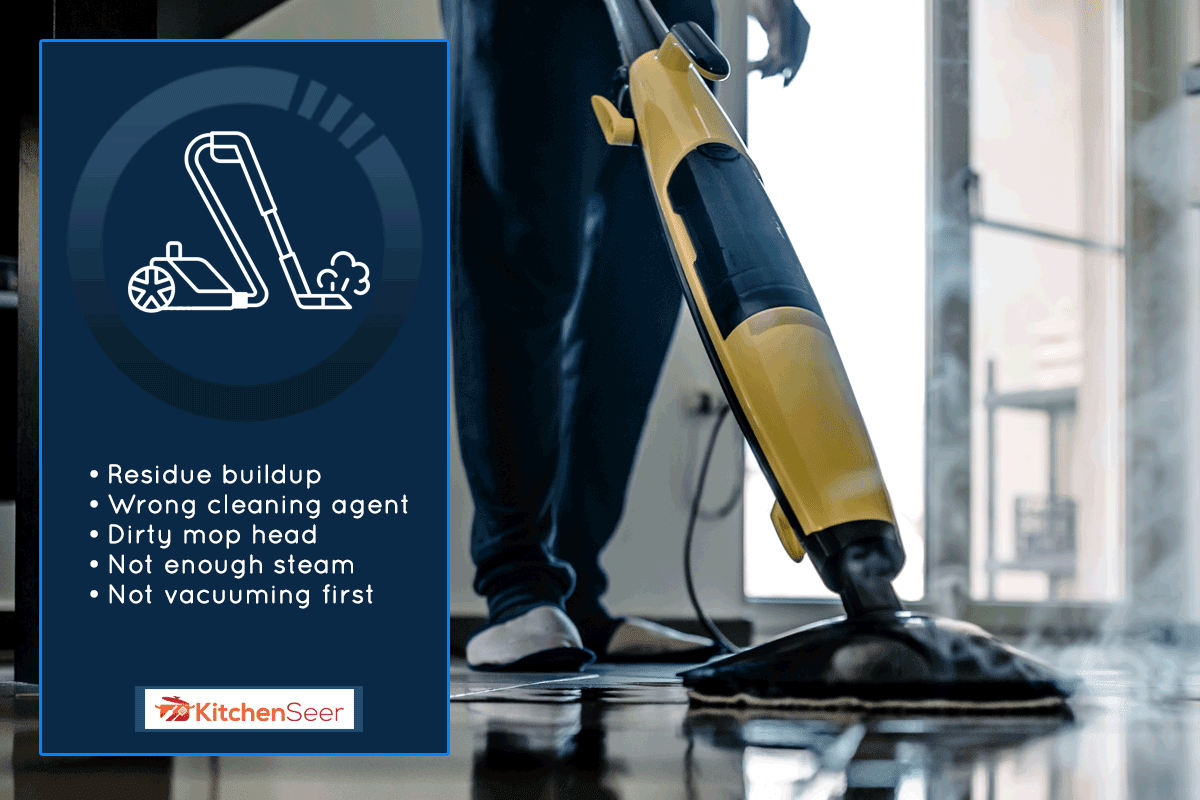
Why Are My Floor Still Sticky After Steam Mopping?
Steam mopping is a type of cleaning that uses hot water vapor to clean surfaces. The steam loosens dirt and grime, making it easy to wipe away.
By steam mopping instead of traditional mopping, you avoid having to use harsh chemicals on your floors. However, you may still find that your floors are sticky after steam mopping.
Here are five possible reasons why your floor is still sticky after steam mopping:
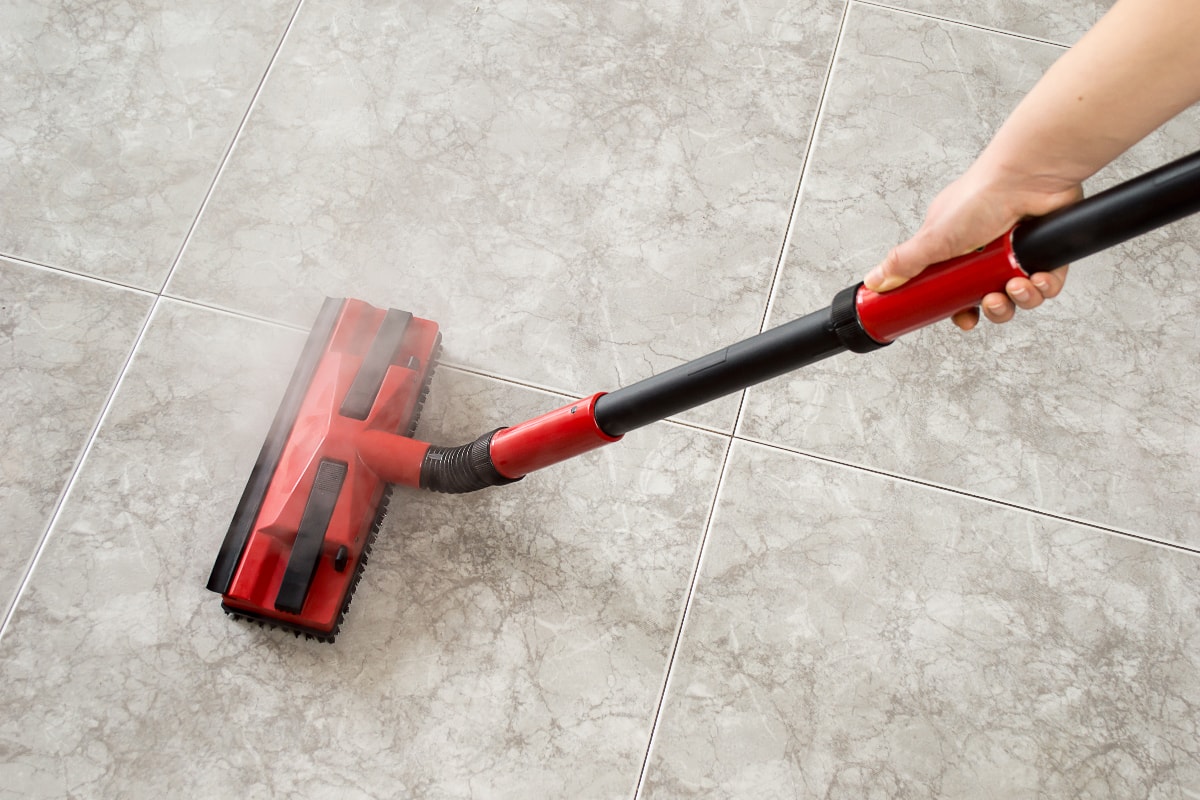
Residue Buildup
If you used chemicals in the past to clean your floors, there may be a residue buildup on the surface. This can make it difficult for the steam to penetrate and loosen the dirt.
To solve this problem, you will need to strip the floor to remove the old wax and polish. Once the floor is stripped, you can then deep clean it with hot water and a heavy-duty cleaner.
Once you have done this, use a new mop pad and steam mop again. The steam should now be able to penetrate the surface and clean the floor effectively.
Wrong Cleaning Agent
If you are using the wrong cleaning agent, it can leave a residue on the floor that will make it sticky. Make sure you are using a cleaner that is specifically designed for use with steam mops.
If you are unsure which cleaner to use, consult the manual for your steam mop. If you still can't find a suitable cleaner, you can always contact the manufacturer, and they will be able to recommend a product.
You can also try a higher water-to-vinegar ratio. The acidity in the vinegar will help to cut through any residue that is on the floor.
Dirty Mop Head
If you are using a dirty mop head, it can actually spread dirt and grime around instead of cleaning it up. This will leave your floors looking streaky and sticky.
Always make sure you rinse out the mop head after each use and wring it out well. You should also wash the mop head regularly in hot water to remove any buildup of dirt and grime.
If you find that your mop head is looking overly worn, it might be time to replace it. In addition, if you previously mopped any sticky spills with the mop head, it will likely need to be replaced. If you don't, you will only be applying the residue back to the floor, and it will become increasingly difficult to clean.
Not Enough Steam
If you are not using enough steam, it can be tough to loosen all the dirt and grime on your floors. When mopping, make sure you are using a continuous back-and-forth motion so that the steam has time to penetrate the surface.
You should also make sure you are using the right amount of water. Consult the manual for your steam mop to find out how much water to use. If you find that you are still not getting enough steam, you can try using distilled water instead of tap water. The purity of distilled water will help to produce more steam.
Not Vacuuming First
Vacuuming is a vital step in the floor-cleaning process, yet it is often overlooked. If you don't vacuum first, you will be mopping over dirt and dust, which can make your floors sticky.
Vacuum the entire area that you plan to mop before you start steaming. This will help to remove any loose dirt and debris so that you can get a deeper clean.
You should also move any furniture or rugs before you vacuum to ensure that you don't miss any areas. Once you have vacuumed, you can then move on to steaming your floors.
By following these tips, you can make sure your floors are clean and free of sticky residue.
Does Vinegar Make Floors Sticky?
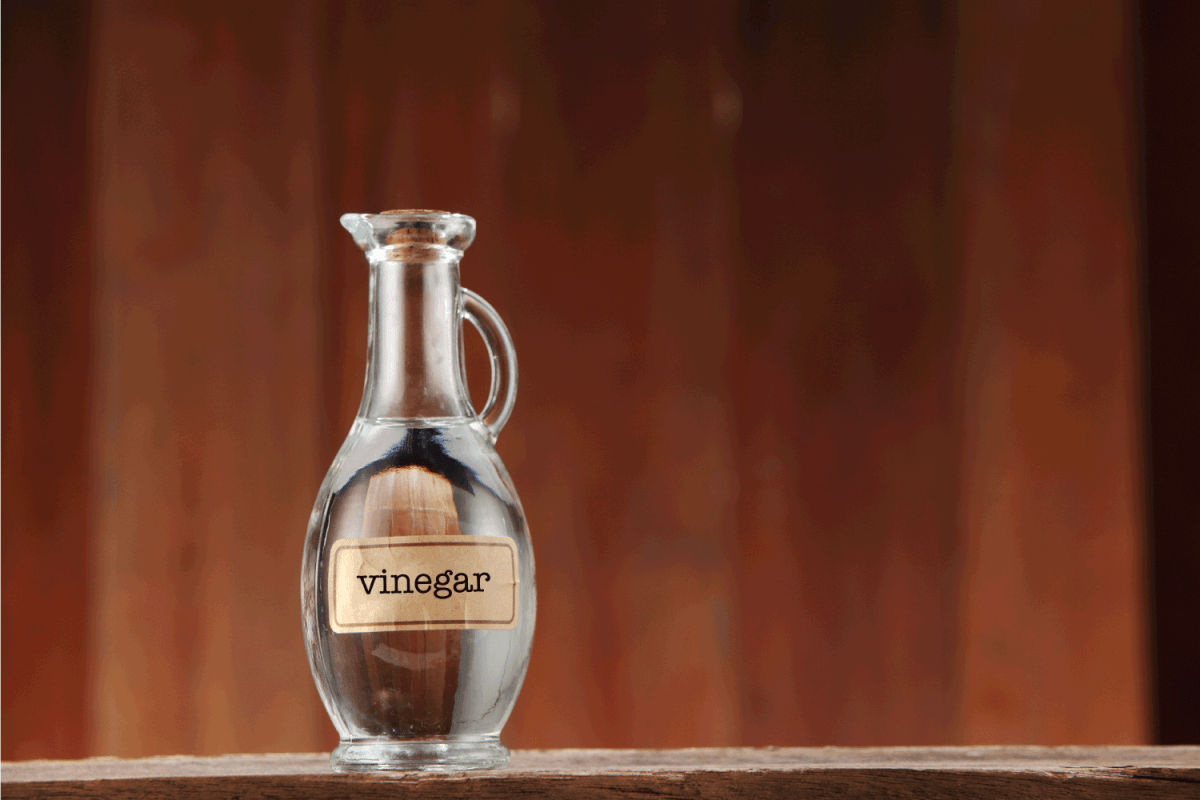
Vinegar is a versatile cleaner that can be used on many different surfaces, but you may be wondering if it will make your floors sticky.
The answer is no! Vinegar is actually a great way to clean your floors and remove any sticky residue. The acidity in vinegar helps to break down the residue and make it easier to mop up. However, it needs to be diluted properly. If you use undiluted vinegar, it can actually damage your floors.
To clean your floors with vinegar, simply add 1/2 cup of vinegar to a gallon of warm water. Mop your floors as usual, and the vinegary smell will dissipate as it dries. You can also add a few drops of essential oil to the mixture to help mask the vinegar smell.
How Often Should I Steam Mop My Floors?

Depending on the foot traffic in your home, you should steam mop your floors at least once a week. This will help to remove any dirt and debris that has been tracked in.
If you have pets or small children, you may need to steam mop more often. Pets can track in mud and other messes, while small children can spill food and drinks on the floor. If you have a particularly dirty floor, you can steam mop twice a week. However, a simple vacuum and mop should be sufficient for most homes.
By following these tips, you can keep your floors clean and free of sticky residue.
Do You Put Hot Or Cold Water In A Steam Mop?
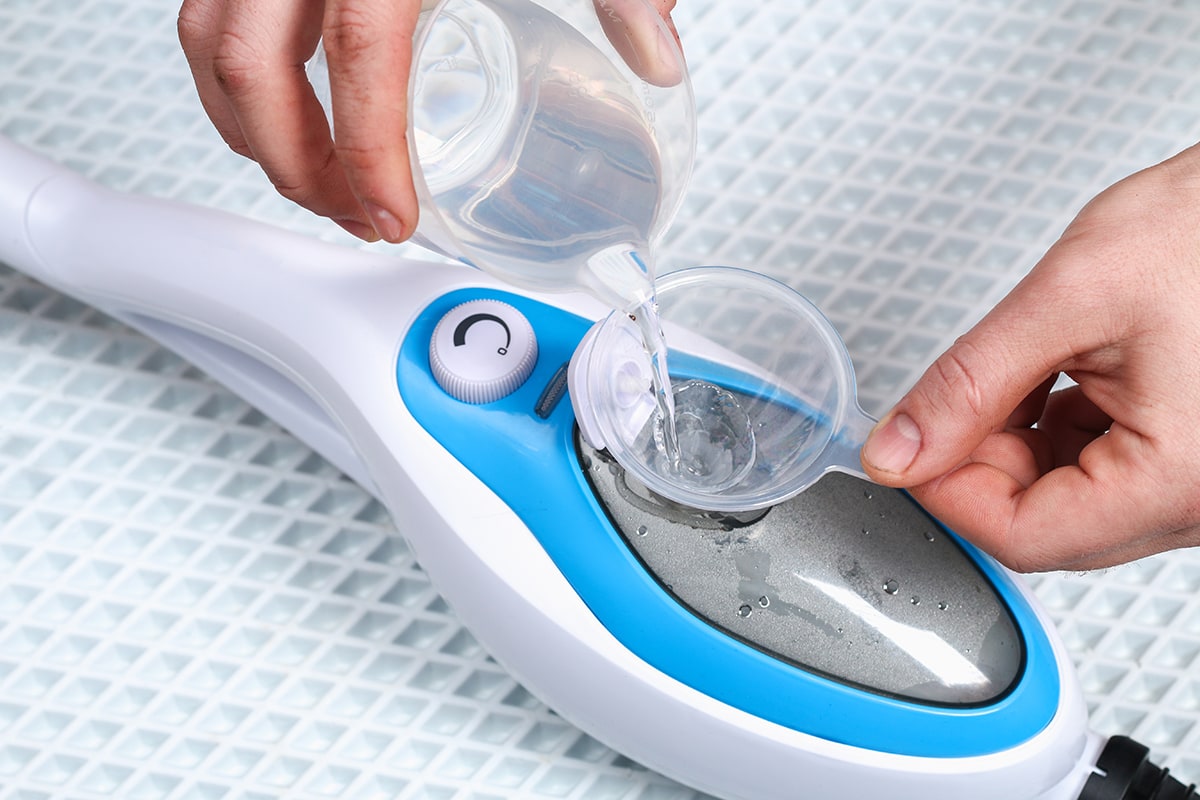
When filling your steam mop, you should use cold water and distill it if possible. The steam mop will then heat up the water to create steam. If you use hot water, it can cause the internal components of the steam mop to break down. This will shorten the lifespan of your steam mop and may void the warranty.
Cold distilled water works best because tap water can have calcium and iron deposits that can clog the steam mop. These deposits can also leave streaks on your floors.
Is It Okay To Use A Steam Mop On Hardwood Floors?
It may be tempting to use your steam mop on all surfaces, but you should avoid using it on hardwood floors.
The high heat from the steam mop can actually damage the finish on hardwood floors and make them more susceptible to scratches. If you must use a steam mop on hardwood floors, make sure you test it in an inconspicuous area first.
This also includes laminate flooring. The heat from the steam mop can cause the laminate to warp and buckle.
If you have hardwood or laminate floors, stick to mopping with a damp mop or cleaning with a vacuum. In the event that you do use your steam mop on hardwood or laminate floors, be sure to put it on the lowest setting.
If you have tile floors, you can use your steam mop without worry. The steam will help to remove any dirt and grime that has built up on the surface.
Do Steam Mops Clean Grout?
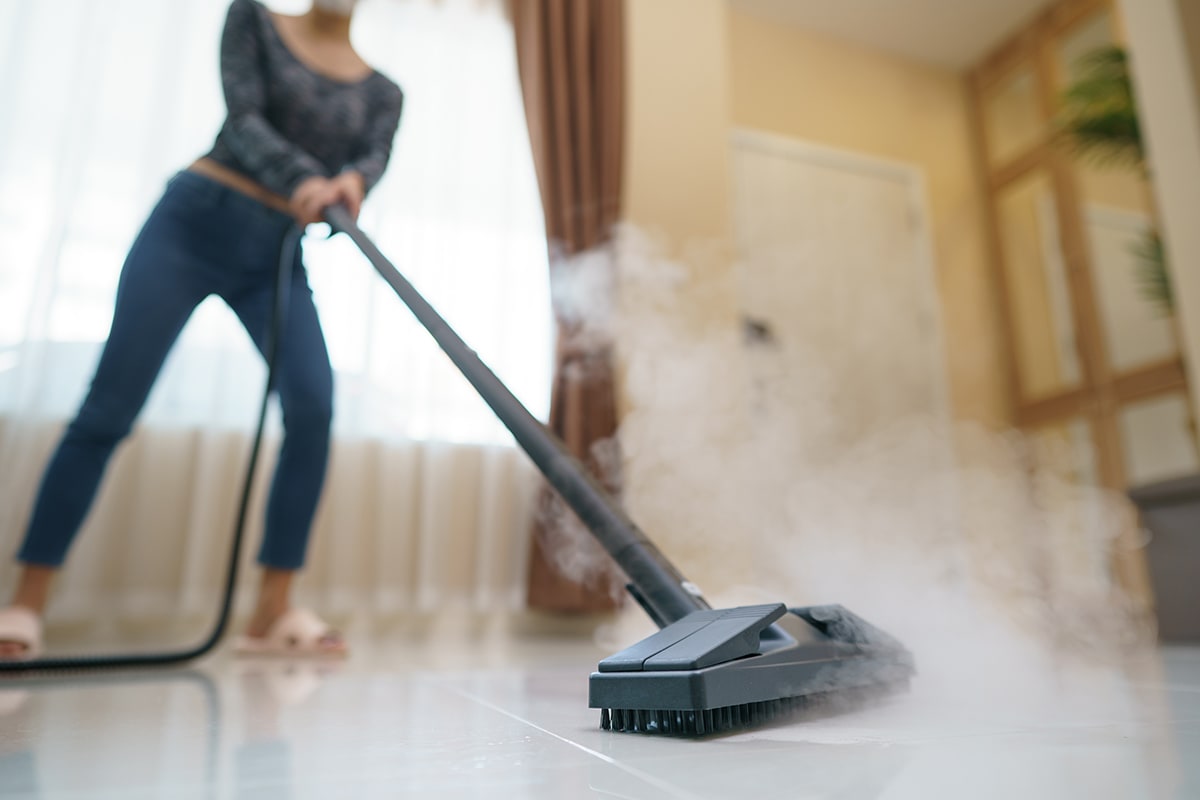
In short, yes! Steam mops are a great way to clean grout. The high heat from the steam will help to break down any dirt and grime that has built up on the porous surface.
To clean grout with a steam mop, hold the steam mop over the grout line and let the steam work for a few seconds. Then, use the scrubbing brush attachment to scrub the grout line.
You may need to go over the area more than once to remove all the dirt and grime. Once you’re finished, mop the area with clean water to remove any residue.
Final Thoughts
Overall, when done correctly, steam mopping is a great way to clean your floors. By following the tips in this article, you can keep your floors clean and free of sticky residue.
Made it to the end? Here are other articles that you might find helpful:
How Often Should You Sweep And Mop The Kitchen Floor?
What To Put Down A Garbage Disposal To Clean It [5 Suggestions]
How To Clean An Oven With A Blue Interior (Lg Or Kitchenaid)

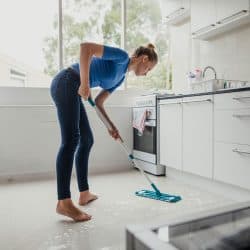
![Low angle view of a man mopping the floor in his kitchen, How To Make Kitchen Floor Less Slippery [With 5 Simple Methods]](https://kitchenseer.com/wp-content/uploads/2021/08/Low-angle-view-of-a-man-mopping-the-floor-in-his-kitchen-250x250.jpg)


![Professional removing the cork flooring panels, How To Remove Cork Flooring From Concrete [Quickly & Easily]](https://kitchenseer.com/wp-content/uploads/2022/12/Professional-removing-the-cork-flooring-panels-250x250.jpg)
